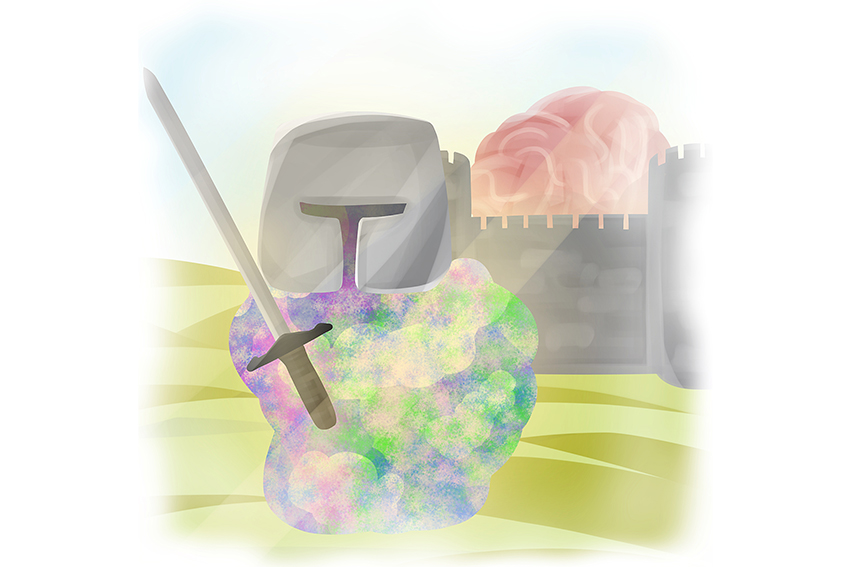Watch out, infections — the brain may have another biological warrior to protect and defend against invading microbes.
Researchers at Harvard Medical School and Massachusetts General Hospital recently published a new study discussing how amyloid beta proteins, proteins found in the brain and body that have long been linked to Alzheimer’s disease, may form plaques in order to fight off invading microbes in the brain.
Jonathan Pierce, UT neuroscience associate professor, said this study is interesting because it suggests that these plaques are useful for combating infections in the brain, something scientists were previously unaware of.
However, researchers still do not know if a certain threshold of plaques eventually deteriorates the brain’s functions, leading to a neurodegenerative disease such as Alzheimer’s, a common type of dementia, or progressive mental deterioration.
Mary Quiceno, doctor and associate professor in the department of neurology and neurotherapeutics at University of Texas at Southwestern, said these amyloid beta proteins can act as an indicator to whether a patient may develop Alzheimer’s.
“Every dementia, at the end, will look the same because it affects the same organ,” Quiceno said. “Right now, it’s such an exciting time in research for neurodegenerative dementias because we have all these biomarkers [a measurable indicator of a condition] that we can use in living humans.”
There are two types of Alzheimer’s: the late onset, which begins around 70 years old or later, and the early, sporadic onset, which begins around 40-60 years old, Pierce said.
Those with early onset Alzheimer’s have a genetic defect, which causes too much amyloid beta synthesis and inevitably leads to the disease. However, the majority of Alzheimer’s patients have late onset Alzheimer’s, which is caused by various other factors, such as environmental influences, and not by genetic mutations.
Everyone who develops Alzheimer’s has these amyloid beta plaques, but many people who have these plaques do not end up getting the disease.
However, there are more factors besides the presence of plaques or infections that lead to Alzheimer’s.
Keith Keitz, UT chemical engineering assistant professor, said that a complicated interplay of various proteins and environmental factors affect the onset of Alzheimer’s. Researchers still have much to learn about these factors and how they influence the brain, Keitz said.
Alexander Mably, post-doctoral fellow in the Center for Learning and Memory, said that while the brain is one of our most integral organs, there is still so much mystery surrounding it due to lack of funding and access to human brains.
“If you have a cancer, you can take out the tumor and look at it. But you can’t do that with the brain,” Mably said. “The brain is very dense and every part is very important.”
Mably said there are numerous questions neuroscientists have to answer, especially regarding neurodegenerative diseases and the complex machinery behind memory.
Keitz said that because neurodegenerative diseases are extraordinarily complex, the lack of understanding of their biology limits subsequent diagnosis and treatment. This new study sheds light on the plaque’s physiological role in the brain and suggests that this mechanism of plaque formation is not random, but rather highly regulated.
“There’s a lot of open-ended questions, and a lot of ground to be made up,” Keitz said. “This is really an incredible paper in understanding the mystery behind amyloid beta.”















